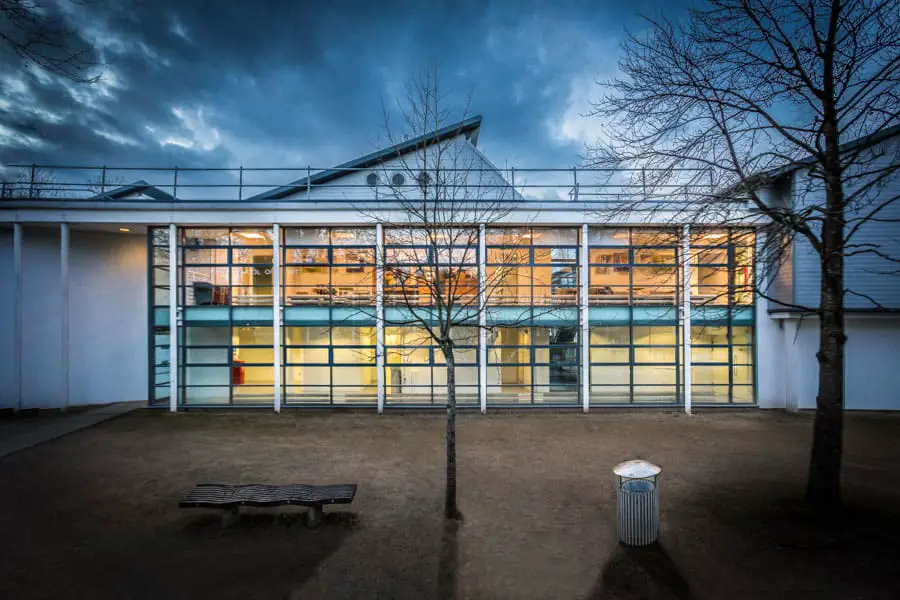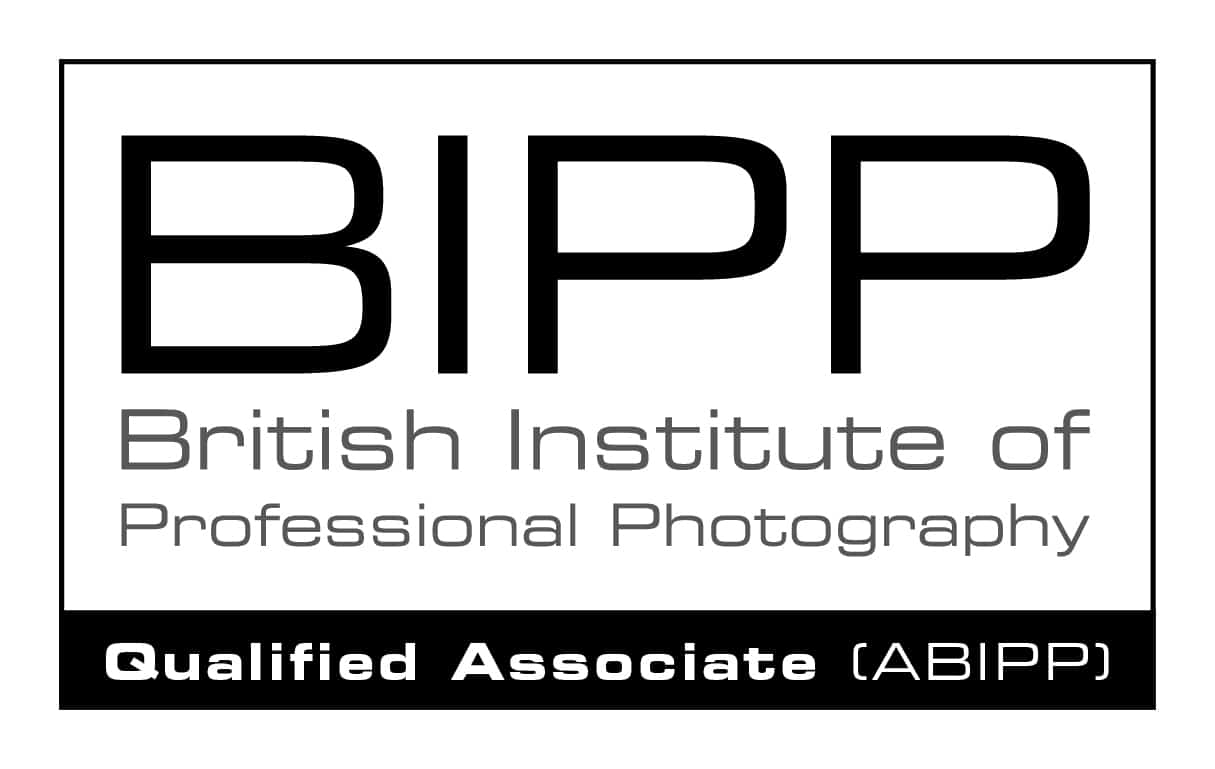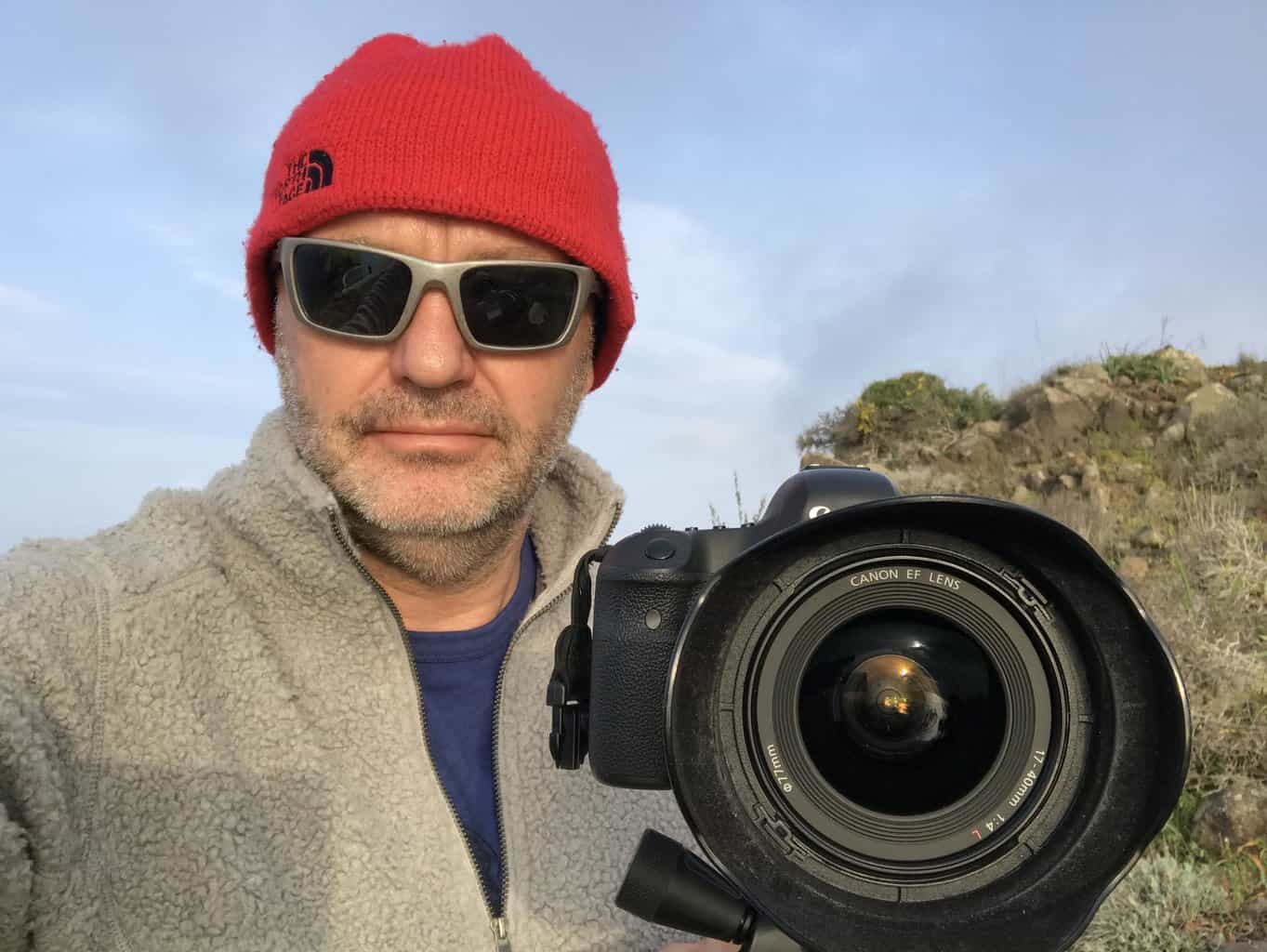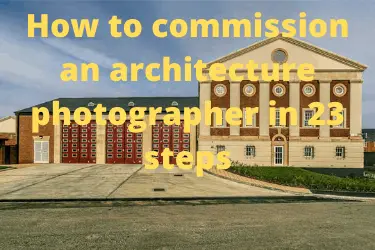I hope by now you will be aware that I am an architectural photographer, and that I specialise in photographing buildings and the built-environment.
To successfully commission an architecture photographer you as the client need to know exactly what you want, prepare a brief and find the architecture photographer that is right for you. Find the right architecture photographer and they will help you with the rest of the process. The right photographer will be experienced in architecture photography and will guide you through the process from start to successful finish.
In this post I tell what you need to know and consider when you are looking to commission an architecture photographer to photograph your building or completed construction project.
This is not a sales pitch – this is genuine advice that I know will help clients commission an architecture photographer, whoever that might be.
And to prove this I only work in Dorset, Hampshire and surrounding counties so am excluding myself from large parts of the country on location alone!
Who Am I?
I am Rick McEvoy, well you should know that by now. I specialise in architecture and construction photogrpahy in Dorset, Hampshire and surrounding counties.
I am professionally qualified in photography and construction so am suitably qualified and experienced to advise you clients about this stuff.
A photo from me
Here we go with my advice for clients who want to commission architectural photography. But first an architectural photo.
 New entrance to the library at the Winchester School of Art
New entrance to the library at the Winchester School of Art
1 – What are the images for?
We have to start somewhere, and this is as good a place as any. What do you need the images for? Most frequent reasons for me photographing buildings are
- To record a recently constructed building at the point of practical completion
- For advertising/ sale/ marketing purposes
- For client/ designers websites
- For design/ construction competitions
The most important thing is to know what you want the images for.
Now whilst this might sound obvious I have had discussions with clients in the past where the full potential of the images was only realised following initial discussions which broadened out the scope of the shoot and gave the client much more than he anticipated..
2 – Prepare a brief
Before engaging a photographer it is a good idea to prepare a brief. This is the basic specification, scope of works, call it what you like. It is what the photographer is going to price against.
Well in the first instance it will be the thing that the photographer asks questions about to enable a scope to be agreed, with inclusions and exclusions.
I often receive a written brief with drawings marked up by the architect showing
- Site location
- Overall site plan
- Building floor plans
- Building elevations
- Important features of the building/ project
- North/ South/ East/ West orientations
- Restrictions relating to the site.
The more thorough the brief to the photographer the better the entire process will be for both parties.
3 – Finding a photographer
If you were looking for an architect where would you look? I would enter the following in Google
“architect professional bodies”
That gives different results than just putting architect in, leading you to all sorts of sponsored websites. This gives you a list of professional architectural bodies.
Taking that logic, if I were looking for a photographer I would enter the following in Google search
“photography professional bodies”
This lists the following organisations
British Institute of Professional Photography
The Royal Photographic Society
Master Photographers Association
That should be fine.
Choosing a photographer is for me the same as choosing an architect.

If you enter something like “architectural photographer in Dorset” you will get some decent results, like me as search result number 2, but that is because I have done lots of work on my website to make this happen.
High Google rankings do not equate to competence!
I would seriously recommend going to any of the professional bodies to find your architectural photographer.
I am of course a member of the BIPP myself – ABIPP no less.
Obviously I am a great choice to photograph your building, being professionally qualified in photography (ABIPP) and construction (MCIOB). But in all seriousness please go through a reputable organisation, whichever one that may be.
4 – Shot list
Make a shot list. Write down the shots that you want. One thing that this will do is help you to think about this a lot more – writing this stuff down definitely focuses the mind and will help you develop a complete shot list.
And this list you give to the photographer you commission – these are your mandatory shots that are required from the shoot.
Now the photographer will take other photos that he/ she feels will be of use to you as the client, but armed with a shot list everyone knows that the mandatory bases are covered.
5 – Photographers’ style
This is an interesting consideration. I have my own style of architectural photography. You can see this style on my website on my architectural photography portfolio page.
Most people like my style, but some do not. And this is fine.
If you do not like my style of images then I am not the photographer for you. But if you do then give me a shout.
It’s a matter of taste
Style is a very personal thing, and every photographer has their own style, so please make sure that you like the style of images that a photographer produces.
I have been asked if I can produce different styles, and on some occasions have declined work as it is not the style imagery that I produce.
It would be disingenuous of me to take on work and commit to create a style that I myself have not perfected.
No weddings
I do the same for wedding photography, family portraits, pet photos etc – i.e. I decline such enquiries.
I do what I do and am very comfortable with this. I will not take on work that I am not able to produce to the same high standard as my architectural photography work.
So – make sure that you engage a photographer whose work you like.
6 – Budget/ Cost
How much does it cost to get a building photographed? The answer as ever is it depends.
Most photographers charge on a time basis – time for image capture and image processing, along with creative and licensing fees.
I charge on a half-day or full-day rate, with a minimum amount of time on site plus expenses.
I am not the cheapest
If your priority is the lowest price then I am certainly not the photographer for you. I have built up my client base, portfolio, qualifications, equipment, reputation and professional standing over years and years of hard work.
So if you are looking to pay £100 for photos of your building then I suggest you look elsewhere.
This is why I work mainly for architects and building owners.
I find that they are people who genuinely value high quality photography of their work/ property, as the photography is capturing in perpetuity their work at that moment in time.
Not everyone appreciates the amount of work that goes into a building, but architects and building owners certainly do.
And they also value the design, design intent and end product.
7 – How many images?
This ties in with the cost of getting your building photographed, and of course the scale and complexity of the project.
There is no number here. For a house or smaller project I will typically produce 20-30 images only. For larger projects sometimes more, but seldom more than 50 images.
This gives me a piece of work to do, getting the edit (of the images taken) right, but if everything else I write about in this post has been done thoroughly and to plan this is not normally a problem.
The brief is what matters
Normally I produce a set of images that satisfy the brief as I understand it, which I issue to the client fully edited.
This is the normal process.
The other approach is to issue a set of partially edited images to the client and for them to choose which images they want. This normally happens when there is a specific need, such as a specific number of images required, or when I am working for a third party representing a client.
As long as the methodology is agreed as part of the commissioning process I am happy to do whatever the client wants.
8 – Copyright/ licensing/ exclusivity/ time
Copyright normally remains with the photographer.
When I issue images to a client the client is granted the rights to use them for the purpose agreed, for a limited period of time.
There may be other restrictions on use or specific requirements of the client which are included in the quotation and terms and conditions.
Again (virtually) anything is possible as long as it is agreed by both parties.
One thing that I do state in my quotations and standard terms and conditions is that the client is not entitled to use the images until they have been paid for.
9 – Timing day/ year
A bit more complicated this one. Timing needs to be thought about. Time of day and time of year. Let me give you a couple of examples of things that can be affected
- Outdoor swimming pools. There is nothing worse than photographing a spectacular garden with a lovely outdoor swimming pool with the cover on.
- Bare trees. I love bare trees but who wants a spectacular new building photographing with bare foliage? If there is a substantial amount of evergreen foliage then this is not a problem.
- Orientation of the sun. Where is the sun shining? Is there a primary façade? Do you want sunlight streaming in through the windows, or warming up the significant front elevation?
- Sunrise/ sunset – are either of these important to the content of a photo?
- Traffic – is there a peak time for traffic/ visitors/ building occupants arriving/ departing?
- And one last point on timing is planting. There is a planting season, so if a building is not completed to correspond to the planting season, which is often the case, there may be large unplanted areas which can make the building look unfinished.
10 – Weather
Oh the lovely British weather. This is the bane of my life.
No-one wants their building photographing when it is raining. Well no-one that I have met anyway! So the changing weather causes mayhem with schedules and external shoots.
The ideal conditions for me are these.
Cool, dry, blue skies with some white fluffy clouds.
I can do sky replacement in Photoshop, but that takes time and costs money, and there is the flatness that such light inevitably creates in a photo. Update – it takes a little time but is much easier now with some funky new software that I have!
Internal construction product shots are the only thing that I photograph that is not (normally) weather dependent.
This really is a problem, the only positive being that the weather tends to not be quite as bad as forecast normally.
11 – Preparing the building/ location
This is a big thing, which can have a significant impact on the success of a shoot.
Preparing the building for a shoot has many benefits. From a photographers’ perspective, a building that has been prepared is easier to photograph. And the easier a building is to photograph the better the photos and the quicker a shoot can be successfully completed.
And preparing a building, and it’s grounds, means less editing time which means better images quicker at less cost for you as the client.
Think of this as though you are preparing the building for a viewing by a potential vendor – I don’t need the smell of fresh coffee and freshly baked bread (as nice as that would be).
When I say prepare a building, here is a list of things that I ask to be done before I arrive on site
- Turn all the lights on inside
- Disable PIRs/ absence detection (if photos are required with all lights on which is normally the case)
- Light fires so they have that lovely glow
- Straighten curtains/ blinds
- Straighten soft furnishings/ cushions
- Remove dog beds/ food bowls
- Provide freshly laundered towels and bedding
- Move vehicles/ skips/ scaffold/ piles of debris
- Get rid of hose-pipes (which can be really hard to remove in Photoshop)
- Cut the grass
- Check for gravel spillage – another real time consumer
- Sweep paths/ roads/ driveways
- Chewing gum on paths/ playgrounds?
- Clear work surfaces
- Finally, a general tidy up always helps
And once everything is looking all shiny and sparkly a few additions that will finish things off nicely
- Imagine the building how you want others to view it.
- Publications on desks/ tables
- Flowers
- Colourful features
- Branding items
I will produce a checklist and publish this in a future post. But hopefully you get the idea.
Sorry I forgot the one intangible in all of this. In my experience clients who have gone through the process of preparing their buildings have found that this has helped crystallise their shot list. It sort of started the thought process.
12 – The day of the shoot
The first question is this – do you want to attend on the day of the shoot? Some clients do, some do not. It depends on many things. If it is a house then of course there will be someone there, be it the house owner or their agent.
And for commercial buildings it just depends.
But there is one thing that I do need to warn you about in advance. If you commission me to photograph your building please remember that I am a man and I only do one thing at once.
So, when I am in the zone and taking photographs there is little point talking to me – I am not listening! I can’t – I just can’t manage this.
So up to you, with that final caveat of course.
13 – Access/ site activities
Are there specific access requirements/ permissions/ inductions that need to take place?
- Is there anything happening on site that might get in the way?
- Are any permits required?
- Does the photographer need to wear PPE? I of course have full PPE which is suitable for most construction sites, and my camera gear is also set up so I can get around live construction sites quickly and efficiently causing minimum disruption.
- Does the photographer need a CSCS card, or are alternative arrangements going to have to be made? I am a current CSCS card holder.
14 – Incomplete works
Following on from the point above I have turned up on site to photograph things to find them not complete – very frustrating. Of course, completion of a major construction project is a very busy and stressful time – me turning up right in the thick of things is rarely appreciated by contractors!
This is a common problem when I turn up to photograph completed construction projects. Practical completion has been achieved but there are still works ongoing to sometimes surprisingly significant extents!
When is the best time to photograph a building?
The best time to photograph a completed construction project is once everyone has packed up and left site, but immediately before people start to use the building and make it their own.
I rarely get this small window of time.
And more often that not the external works are not completed – these typically get done once the inside of a building has been handed over.
I have often had to struggle through virtual mud baths to get to the inside of a shiny new building!
And a particular dislike of mine is the damage caused by utility companies outside the building plot – so many cuts in footpaths where the different services have been installed all using slightly different routes at different times. Luckily Photoshop can fix a lot of these problems, but this does take time.
15 – Furnished or not
This is always an issue on new build projects. If I photograph the building once completed but prior to being furnished the interior shots look like an
empty building, which is not the best to be honest.
There is a time between a building being furnished and occupied which is the prime time for a building to be photographed.
And some buildings like schools do experience heavy use, and wear and tear right from occupation.
16 – People
Do you want people in the photos? Normally not, unless it is a public space or public facility such as a sports centre, where people are preferable.
And that leads to a problem I encountered once – I went to photograph a leisure centre that had just been built but there were no people there at all – it was like a ghost town.
I ended up taking photos with me in them and trying to get the odd person passing by to join in the fun and be photographed!
17 – Contingency planning
This needs talking about. There are many things that can go wrong that can only be dealt with by both parties agreeing on a plan B. I have written about many of the these things in this article, and have a little checklist list of the most frequent problems that I address on every commission.
- Adverse weather
- Works not complete
- Access to areas not possible
- Furniture not in place
- Deliveries/ works on the day of the shoot
- Utility companies on site
- Decant operations
- Ongoing site works
- Additional photos not on shot list
- Non-attendance of participants
At the very least a conversation needs to take place about these potential problems, and the impact of any such issues documented and the consequences costed.
18 – Image processing/ File types/ sizes
Easy one this. This is for me to deal with. This is just so you know.
I shoot in RAW, which is the format most photographers use. RAW image capture allows us to capture the maximum amount of data in a scene. This data is then processed in Lightroom, Photoshop and other software to produce a final edit.
Once the editing is done I convert the files to Jpeg format, which is the universal format that anyone can view.
I do all image processing myself. It takes time to produce the images that you can see on my portfolio pages.
And if there is additional editing over that normally required then there may be an additional cost. I am talking here primarily about having to remove things from images using Photoshop, and replacement of the sky.
I can provide RAW files if required, but there is usually no point as you need software like Lightroom or Photoshop to view images in this format.
Like I say, not something for the client to normally have to worry about, just to be aware of.
Oh yes, nearly forgot – I issue a full resolution set of images and also a compressed set which are great for sharing, emailing and social media.
19 – Data security/ integrity
I have cloud backups of my images, which I store for period of time yet to be defined. This has been added to my standard terms and conditions – I will guarantee to hold copies of data for three years from the time of image capture.
If a client requests a copy of the images within that time period I will gladly provide, but after that time I cannot guarantee having the data. There is a problem with storing such amounts of data – I have over 75,000 photos in my Lightroom Catalogue at the time of writing, and this is growing on a weekly basis.
20 – Supply chain sharing
An interesting one. Are the photos to be shared with the supply chain? As the commissioner of the images it is important that and shared uses are agreed with the photographer as part of commissioning.
Do contractors/ sub-contractors receive copies, or is the photographer at liberty to sell the images to them as well?
As a matter of course I agree with my client that the building owner can be issued with a set of my fully edited images. Quite often this is done by the client, and I see this as a basic courtesy for someone who has helped me photograph their property.
21 – Confidentiality
I have photographed buildings for famous people. Unfortunately I am not allowed to say who these people are.
Client confidentiality is very important to me, and I take this very seriously.
This is particularly important when I am photographing peoples’ homes. I always agree with the client how I may use the images myself.
Whilst I might be the copyright holder as the photographer who has taken the images I have a professional responsibility to respect the confidentiality of my clients.
There are various confidentiality areas that require consideration
- Commercial confidentiality
- Client confidentiality
- Individual/ personal confidentiality
- Children/ vulnerable persons
- Security
I quoted for one job where in the end the only way I could guarantee the confidentiality demanded was to destroy all the digital files once the client had been issued with the images and was happy with the edited image set.
22 – My standard terms and conditions
If you would like to receive a copy of my standard terms and conditions please get in touch by email, commenting on this post or by using the contact form – entirely up to you how you do this. Get in touch and I will send you them in a Pdf.
23 – And finally
I hope that this post is helpful to you when considering getting your building photographed.
Please get in touch if you have any questions – my response is not conditional on getting work/ money from you.
If you want to talk to me about a future collaboration then great – if not I would still be delighted to hear from you and answer any questions you may have.
I try to put helpful information on my website that people find useful and want to read and share – if this happens then my website is successful, and my readers are benefitting from the content I am creating.
Oh yes – this is me!

So we are all happy.
Check out my other posts on this subject
Construction Photography Advice and Guidelines for Clients
How to commission architectural photography
73 Great examples of My Construction Photography in Hampshire
51 great examples of my construction photography in Dorset
How to become a construction photographer
Construction product photography
OK I am done now!
Thanks for reading this post, and please check back to my blog next Monday for my next post, whatever that may be.
Rick McEvoy MCIOB, ABIPP
#howtocommissionarchitecturephotographer #architecturephotographer #architecture #photographer
